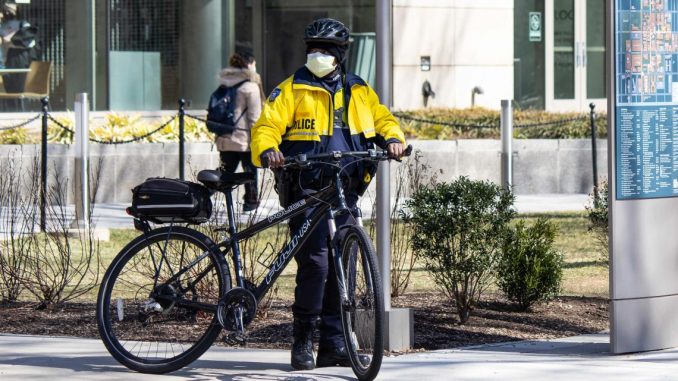
Temple University released a report Friday detailing findings from the university’s Violence Reduction Task Force.
The Task Force, consisting of students, community members, faculty, staff and parents and chaired by Jennifer Ibrahim, interim dean at the College of Public Health, was established in January after the fatal shooting of a Temple student in November 2021.
The university also announced other efforts since then, including increasing campus safety patrols, relaunching FLIGHT as a fixed-route service and starting an audit of Temple’s safety efforts led by former Philadelphia Police Commissioner Charles Ramsey.
As of Nov. 22, there have been 465 homicides in Philadelphia, according to the Office of the Controller’s gun violence dashboard. There were 562 in 2021 and 499 in 2020.
The Task Force began meeting in March and April and then split into working groups that focused on examining existing violence reduction measures at Temple, efforts at other urban institutions, collaboration on violence reduction actions and communication strategies surrounding Temple’s violence reduction efforts.
Despite more than 250 “community-engaged” initiatives that may help mitigate violence, the Task Force found that the university’s existing programs lack a “clear home” and are not regularly collecting or updating data. Working group discussions focused on improving these efforts.
A working group within the Task Force examined leadership, collaboration with local law enforcement, funding and technology use and communication efforts surrounding crime by speaking with vice presidents for campus safety or police chiefs at Marquette University, the University of Chicago, the University of California, Berkeley, UCLA, University of Southern California and Johns Hopkins University, according to the report.
The working group was interested in “Crime Prevention Through Environmental Design,” a program at Marquette which focuses on addressing broken windows, trash in the street, graffiti, vacant lots and crime reduction through community engagement. Temple also sought to learn more about the University of California’s system that uses a portion of workers’ compensation fees to fund the cost of violence prevention measures.
After reviewing these programs, Temple believes they can expand work from the North Central Special Services District, a neighborhood organization that aims to promote local businesses and keep the area clean. Additionally, Temple would like to examine environmental elements on campus and in nearby neighborhoods and explore the feasibility of a funding program, like the University of California’s system, and other ways to fund violence prevention.
The findings from examining the efforts at Temple and other institutions were presented to working groups to discuss and draft final recommendations.
Here’s what the Task Force recommended:
Oversight and Communication
The Task Force recommended that the university develop an advisory board, which would include students, employees, parents and community members, to continue to support Temple’s violence reduction efforts.
Temple should also strengthen the way it communicates about campus safety and violence reduction efforts, according to the report. Some of these recommendations are already in practice, including the recent introduction of a new message after initial TUalerts that reads, “Police have cleared the area. You may resume normal activity.”
The report also recommends that the university should also create a campus safety tab in the TUPortal, to promote safety resources and practices, and develop an upgraded campus safety website.
Improving Existing Efforts
The Task Force recommended that Temple should emphasize its collaboration with the Philadelphia Police Department, evaluate staffing concerns and retention at Campus Safety Services and expand community engagement and student connection with officers.
Additionally, the report found that Temple should expand hours for the Walking Escort Program and utilize ambassadors as escorts on campus so that more officers could be assigned off-campus. The university was also advised to develop a behavioral training program for officers, increase the use of security cameras and license plate readers and collaborate with local stakeholders to expand safety technology usage.
The Task Force also recommended that Temple create a preferred landlord’s program for off-campus housing that meets certain safety standards. Temple’s preferred landlord program is currently being developed and should be ready in Fall 2023, according to the report.
Citywide and Community Engagement
The Task Force recommended that Temple should hold a Violence Reduction Summit in Spring 2023 to engage crime experts and local university, city and community leadership. After the summit, Temple should establish a city-wide consortium on campus safety and crime reduction.
The report advises the university to designate a staff position that will lead and coordinate violence reduction efforts. Additionally, the Task Force suggested enhancing community-engaged initiatives, improving the physical environment around Main Campus and continuing support for community technical support and existing community programs and creating new ones.
Evaluation and Funding
The Task Force also recommended that Temple works with Campus Safety Services to create a dashboard that lists crime trends and university violence reduction strategies.
The university should also consider developing and offering financial support for a research center or group to examine evidence-based violence reduction strategies and community programs.
Temple could use Internal Temple University Funds, pilot funding for research, external government funding, external grant funding, or using a method similar to the University of California’s system, to support future safety efforts.


Be the first to comment